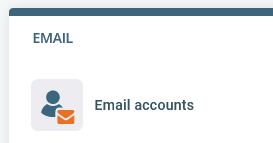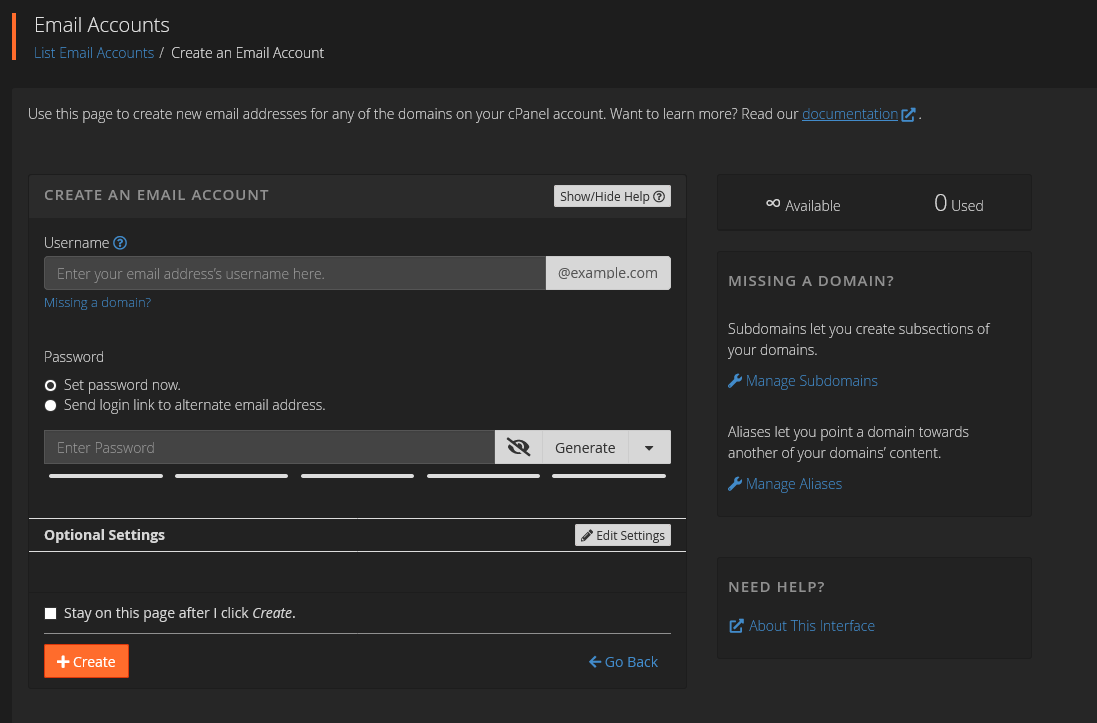Regardless of whether you’re creating a personal blog or trying to launch a new online business, communicating with your users through email addresses associated with your domain name is essential for creating a reputable image. It shows that you’re taking the project seriously.
The email service is a significant part of your ScalaHosting account, and today, we’ll show you how to take full advantage of it.
Managing email accounts with ScalaHosting
Email is an essential part of ScalaHosting’s services. It’s available on all shared and VPS plans, and there are also business email hosting packages for those of you who want to use our servers only for communicating with partners and customers.
Most ScalaHosting accounts are controlled via cPanel – one of the world’s most popular web hosting control panels. However, with our managed VPS solutions, you can also choose to use SPanel – an all-in-one management solution designed and developed by ScalaHosting specifically for our virtual private servers.
In terms of ease of use, cPanel and SPanel are pretty evenly matched. Still, the interfaces are slightly different, so with today’s guide, we’ll show you how to use the two platforms to manage your email accounts.
Viewing email accounts
cPanel
If you’re logging into cPanel for the first time, the Email Accounts section will be one of the first things you see.

It contains a list of all the email addresses created on your account, in addition to quite a few tools for managing them.
SPanel
SPanel’s Email Accounts section is also available on the User Interface’s homepage.

In addition to the list of email addresses already created, it offers a quick and easy way of creating new ones.
Creating email accounts
cPanel
To create a new email account with cPanel, open the Email Accounts section and click Create.

First, you need to pick a username for the new account. This will be the part of the address before the @.

At this stage, you also get to decide what you’ll do with the account’s password. You can assign one right now (there’s also a helpful generator to ensure the password is strong), or you can send a login link to the future account owner, which they can use to pick their own password.
The Edit Settings button opens up a few more options.

You can set a storage quota for the new account and decide to automatically create folders for plus-addressed messages (emails sent to username+something@domain.com). You can also send a welcome email to the new account owner with instructions on what they need to do to set up an email client.
When you’re ready with the configuration, click Create to set up the new account.
SPanel
To create a new email address in SPanel, you can use the form above the list of addresses in the Email Accounts section.

The first field is for the account name or the part of the address before the @. From the drop-down menu next to it, you can associate the new account with one of the domains added to SPanel’s User Interface.
Next, you have to choose a password for the new account. The password must be at least 8 characters long, and you can help yourself by using the built-in generator to automatically create and fill in a strong password. You can then view and copy it.
When you’re ready with the configuration, click Create Email to set up the new account.
Deleting email accounts
cPanel
To delete an email account in cPanel, go to the Email Accounts section and find the address you want to delete on the list. Then, select the checkbox next to it and click the Delete button located at the beginning of the list.
![]()
cPanel will ask you if you’re sure you want to delete the account and will terminate it if you confirm. Bear in mind that this action is not reversible and could lead to data loss.
SPanel
To delete an email account in SPanel, go to the Email Accounts section and locate the address you’d like to delete from the list.

Click the Actions menu next to it, and select Delete. SPanel will ask you if you’re sure you want to proceed, and after you confirm, it will delete the account, along with all the data in it.
If you want to delete multiple accounts, you can use the checkboxes next to individual addresses to select them and use the Delete Selected button to wipe the inboxes.
Changing email accounts’ passwords
cPanel
To change an email account’s password, go to the Email Accounts section, locate the account you want to modify, and click the Manage button.
![]()
Under the Security section, you have a field for a new password. The built-in generator can help you create and fill a complex password on the spot. After you’re ready, click the Update Email Settings button to apply the changes.
If you know the account’s current password, it’s also possible to change it via Webmail. The steps differ depending on whether you’re using Horde or Roundcube, but in both cases, the facility to change your password is available in the Settings menu after you log into your inbox.
SPanel
To change an email account’s password in SPanel, go to the Email Accounts section in SPanel’s User Interface and locate the account you want to modify. Then, select Change password from the Actions menu.

In the pop-up that appears, you can enter and confirm the new password. You also have a password generator to help you assign a random, strong password.
You can use SPanel’s Webmail to change the passwords of accounts you have access to, as well.

After you log in at https://[your domain]/webmail/, you will be presented with a few options. Changing the account’s password is one of them. It’s available on the main screen and under the arrow located next to your email address.
Both cPanel and SPanel are designed with ease-of-use in mind, so finding and taking advantage of all the tools related to email management shouldn’t be a problem, even for the less experienced among you. Still, if you have any questions regarding your ScalaHosting account, do not hesitate to contact our technical support team, who can assist you further.
